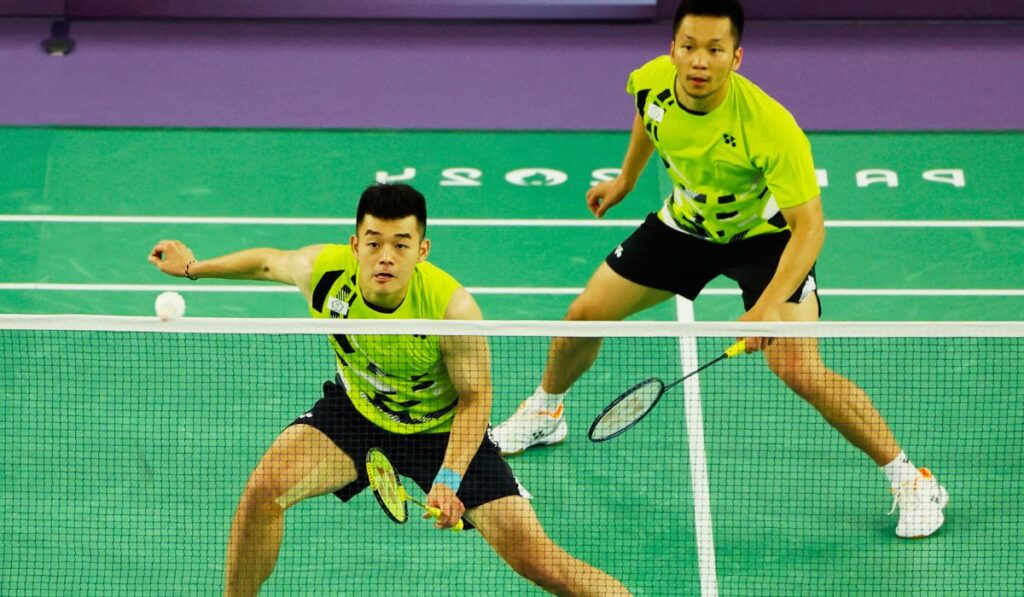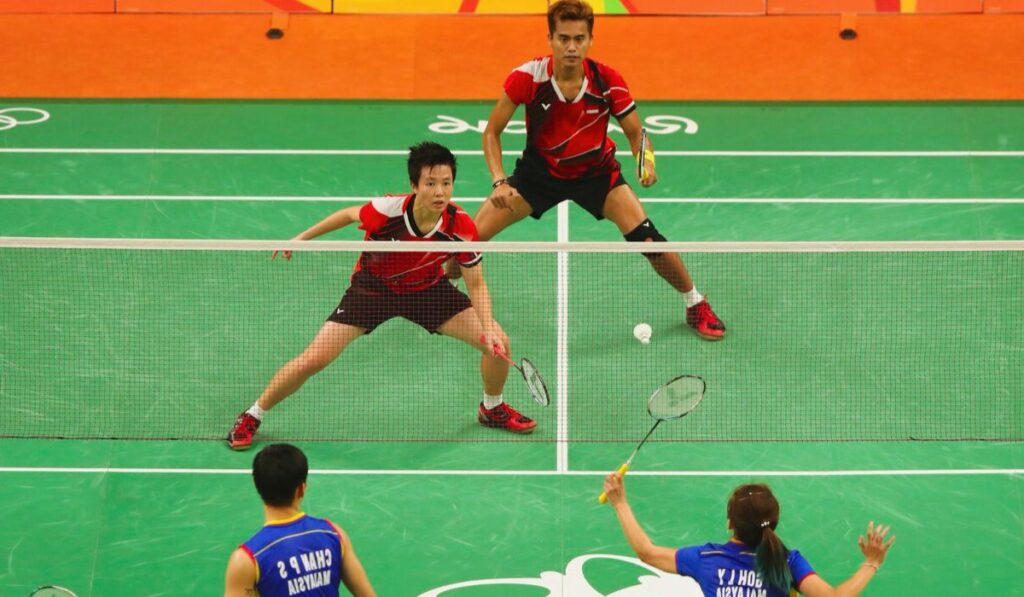How to Stop Losing in Mixed Doubles Badminton: The Proven Strategy That Transforms Average Players into Champions
Mixed doubles badminton strategy is unlike any other format in the sport. It is not just a contest of shuttle and racket—it is a dance of rhythm, trust, and understanding between two players who complement each other’s strengths while covering each other’s weaknesses. Watching a well-coordinated mixed doubles pair is like watching poetry come alive on the court. Every smash, every drop shot, every deceptive flick carries with it not just strategy, but an emotional pulse that grips both the players and the spectators.
Yet, behind this beauty lies a darker side. Many pairs fail, not because of a lack of skill, but because of poor planning, mismatched strategies, or the inability to adapt under pressure. The line between glorious victory and crushing defeat is razor-thin in this discipline, making mixed doubles badminton strategy one of the most fascinating and emotionally charged topics in the sport.
Why Strategy Matters More in Mixed Doubles than Any Other Format
In men’s or women’s Mixed doubles badminton strategy, power and pace often dominate. In singles, fitness and consistency often define outcomes. But mixed doubles is far more delicate and layered. A small error in positioning or a poorly chosen shot can turn the momentum of the entire rally. Since it involves both male and female players, strategies must adapt to maximize physical advantages, tactical placement, and mental resilience.
The man is often expected to cover the backcourt with powerful smashes and clears, while the woman usually dominates the frontcourt with quick interceptions and soft touches. However, modern badminton has shown that these roles are no longer rigid. Female players like Huang Yaqiong and Sapsiree Taerattanachai have proven that women can be devastating from the backcourt, while men like Zheng Siwei show incredible skills at the net.
This flexibility makes mixed doubles uniquely thrilling—and also uniquely demanding when it comes to strategy, anticipation, and chemistry.
The Seductive Power of Positioning
One of the first and most critical aspects of mixed doubles badminton strategy is positioning. Imagine two dancers moving in harmony: one flowing forward, the other covering behind, creating a shield that feels impenetrable. In mixed doubles, this forward-backward formation is often the backbone of success.
When the female player takes control at the net, the male partner commands the rear, generating heavy smashes or deceptive drops. This setup not only maximizes strengths but also places psychological pressure on opponents. A well-placed net kill by the woman followed by a thundering smash from the man can break the rhythm of even the most seasoned pairs.
But the danger lies in poor execution. If either player drifts too wide or hesitates for a split second, gaps open up, and opponents pounce. That is why discipline in positioning is not just tactical but deeply emotional—it requires trust, confidence, and almost instinctive connection between partners.

The Art of Rotation: Avoiding Predictability
One mistake many amateur pairs make is clinging rigidly to one formation. Skilled opponents quickly notice patterns and exploit them. The art of rotation—where players seamlessly switch roles depending on the flow of the rally—is what separates good pairs from great ones.
Imagine the shuttle is lifted high, but the female player feels confident to unleash a powerful smash. The male player must instinctively move forward to cover the net, creating a surprise angle of attack. This kind of fluid rotation keeps opponents guessing and injects a thrilling unpredictability into the match.
However, rotation requires not just technical skills but also emotional synchronization. Partners must sense each other’s intentions without words, much like two dancers who move to the same music without rehearsing. When executed well, it feels seductive, almost magical, leaving the audience mesmerized.
Exploiting Weaknesses with Surgical Precision
Every pair has weaknesses. Some struggle with backhand defense, others falter under pressure at the net. The essence of mixed doubles badminton strategy lies in identifying these cracks and applying relentless pressure until they widen.
For instance, many pairs deliberately target the female player at the backcourt, assuming she may lack the same explosive power as her male partner. But this is where Mixed doubles badminton strategy turns into psychology. A confident female player who answers those attacks with sharp drops or disguised smashes can flip the entire dynamic, shattering the opponent’s assumptions.
At the same time, over-attacking one player can backfire, especially if the pair uses that predictability to set traps. Thus, strategies must blend patience, deception, and precise shot-making. The thrill of mixed doubles often lies in this chess-like battle—testing nerves as much as skills.
The Pain of Poor Communication
Nothing destroys a mixed doubles pair faster than miscommunication. A missed interception at the net, hesitation during a lift, or clashing rackets in the middle of a rally can drain both confidence and energy. These are not just physical mistakes; they are emotional scars that eat into trust.
On the flip side, when communication is seamless—through a glance, a nod, or even the rhythm of breathing—the pair feels unstoppable. Great partnerships are built on this invisible thread of understanding, which is as important as any smash or net kill.
The Power of Silent Understanding in Mixed Doubles Badminton Strategy
One of the most underrated elements of mixed doubles badminton strategy is the silent language that exists between partners. Sometimes a subtle glance, a small nod, or even the rhythm of movement across the court speaks louder than words. In the heat of a rally, when shuttle speed is blazing, there isn’t time for long conversations. Instead, it is the sensory connection—the sound of footsteps, the flick of the racket, the shared trust—that builds unshakable chemistry. This deep awareness allows players to predict one another’s moves, reducing hesitation and maximizing court coverage, making the difference between winning and losing.
Balancing Aggression and Patience in Strategy
Mixed doubles badminton strategy is not just about smashing every shuttle with raw power. Sometimes, restraint is far more lethal. A well-placed drop shot, feather-light at the net, can disarm even the most powerful opponents. Patience creates openings, while aggression seals the point. Players who master this delicate dance—when to explode with pace and when to caress the shuttle—often dominate matches. This sensory mix of tension and release keeps the audience on the edge of their seats and opponents gasping for rhythm.
The Female Player’s Role at the Net
In most mixed doubles badminton strategies, the female player dominates the net. Her presence there is not just tactical but psychological. A sharp push at the net or a swift kill changes the flow instantly. When she reads the game well and anticipates the opponent’s return, she becomes the heartbeat of the rally. The power of a sudden flick from her racket can set up her partner for devastating smashes, creating a flow of attack that feels both seductive and unstoppable to watch.
The Male Player’s Command from the Backcourt
Equally vital is the male partner’s role in commanding the backcourt. His smashes, clears, and steep drops carve open spaces on the court, allowing the pair to maintain control. But this role is not only about brute force—it’s about precision. A perfectly angled smash that kisses the sidelines is as thrilling as thunder, echoing with dominance. Together, the balance of backcourt control and net dominance forms the cornerstone of an unbeatable mixed doubles badminton strategy.
When Defense Turns into Attack
The beauty of Mixed doubles badminton strategy is how defense can transform into a sudden, exhilarating counterattack. A pair under heavy smash pressure may suddenly seize momentum with a perfect block that tumbles over the net or a quick lift that buys them space. The shift is not just tactical but emotional—it rattles opponents and electrifies the crowd. Defense in mixed doubles badminton strategy is not weakness; it is a patient preparation for the next deadly strike.
Psychological Warfare in Mixed Doubles
Beyond technique and footwork, mixed doubles badminton strategy is also a battle of minds. Every fake, every deceptive wrist flick, every pause before a serve plays into psychological warfare. Opponents can be unsettled by rhythm changes, sudden slows, or aggressive body language. A confident smile after winning a brutal rally or an intimidating eye contact across the net can weaken opponents just as much as a smash. Mental dominance is as seductive as physical skill in this format.

Energy Conservation: The Hidden Strategy
Badminton at the highest level is exhausting, and mixed doubles is perhaps the most draining of all. Energy must be spent wisely. Instead of smashing at every opportunity, pairs must choose the right moments, conserving stamina for long rallies or final sets. Clever placement, delicate net play, and targeted attacks on weaker opponents save energy while still forcing mistakes. This hidden layer of mixed doubles badminton strategy separates the great from the merely good.
The Importance of Communication Under Pressure
During intense rallies, one mistake in communication can unravel everything. Partners need to know when to shout “mine,” when to leave a shuttle, and when to switch positions. These decisions must be fast, instinctive, and confident. The lack of communication can leave open spaces, but strong, decisive calls build trust and synergy. In mixed doubles badminton strategy, communication is not just about words; it’s about timing, tone, and confidence.
Adapting to Opponents’ Weaknesses
Every opponent brings a different challenge, and mixed doubles badminton strategy must adapt quickly. Some pairs may have a weaker female net player; others may struggle with backhand defense. The most successful pairs exploit these weaknesses mercilessly. By directing smashes and pushes toward vulnerable areas, they create pressure that feels relentless. Adapting to opponents requires sharp observation and an almost predatory sense of attack that thrills the crowd and terrifies rivals.
Winning with Disguise
In Mixed doubles badminton strategy, brute force alone rarely secures victory. The most powerful tool often lies in deception. A soft wrist flick that looks like a drop but turns into a flick, or a body movement that disguises the true direction of the smash, can completely unravel opponents.
Seduction of Rhythm and Flow in Mixed Doubles
These moments of deception feel sensual on the court. They toy with the opponent’s mind, create hesitation, and set up the perfect strike. Pairs who master deception hold an invisible advantage—it’s not just about shots, but about seducing the
Mixed doubles badminton strategy isn’t just sport—it’s a dance. The rhythm of shuttle exchanges, the sudden bursts of speed, and the tender drops at the net create a hypnotic flow. Spectators are often left breathless not just because of the pace but because of the beauty in coordination. A pair that flows together, moving like a single body, seduces both the game and the audience. This rhythm is the most artistic form of mixed doubles badminton strategy.


1 thought on “Mixed doubles badminton strategy”